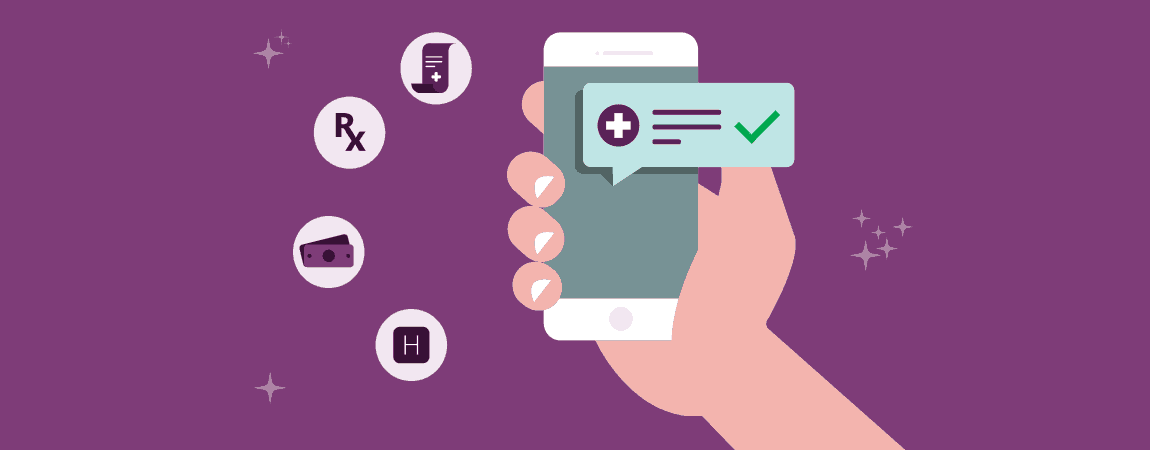To Tackle Employee Healthcare Expenses, Help Them Become Better Consumers
For years, we’ve said that “healthcare spending is skyrocketing” or “the cost of care is climbing.” Employers will pay an average of over $16,000 —...
Connected Navigation Platform
Guiding to high-value care
Behavioral Health
Foster a mentally healthy workplace
EAP
Supporting holistic wellbeing
Virtual MSK Care
Reimagining musculoskeletal care
Virtual Primary Care
Powered by smart navigation
Surgery Centers of Excellence
Best-in-class surgical outcomes
Virtual Urgent Care
Immediate care, any hour of the day
Chronic Care
A new approach to chronic care
Integrations
Flexible to any strategy

Have you ever noticed that buying healthcare is unlike buying anything else in the U.S.? It’s an entirely different experience from going to the shopping mall or the car dealership. In many ways, it’s the absolute opposite experience from what we expect as consumers of nearly every other service. When shopping for common medical treatment like a CT scan, it can be almost impossible to find basic information like the price and quality of different providers. As consumers, we’ve collectively lowered our standards of what to expect when it comes to shopping for medical care. This phenomenon can largely be explained through a concept known as moral hazard. We’ll take a closer look at what healthcare’s moral hazard issue is, what it means for healthcare, and how we can drive down healthcare costs.
Going shopping is an activity we often associate with wastefulness, buyer’s remorse, or “retail therapy.” Shopping is also full of opportunities to save money through price matching, store-by-store comparisons, and online research. In the world of healthcare, this is what shopping is all about. A shoppable service is a common healthcare procedure that can be researched or “shopped” in advance and is offered by multiple providers. These services include things like MRIs and colonoscopies, and often have price and quality data available. Simply taking the time to “shop around” for the best place to receive treatment can yield huge savings, because the prices and quality of these services vary widely between providers. Sadly, we don’t shop around nearly enough as consumers of healthcare, due to a phenomenon that economists call moral hazard.
Moral hazard is a behavior that consumers display when insurance covers them. They tend to take more risks and become less careful about spending decisions, merely because they know that someone else will foot the bill if any mishap does arise. In other words, we care less when we know we’re not paying.
In healthcare, this behavior is visible every time we walk into the doctor’s office. Since it’s implied that we are not responsible for a large chunk of the bill, we tend to pay less attention to how much medical services cost. We don’t usually pry or look closely at the pricing details before receiving care, partly because that information is hard to come by, but also because we’ve come to rely on insurance to keep us off the hook for the full cost of our care.
In a similar vein, we may not be picky as we should be in choosing how much care to receive. Instead of sticking solely to the treatments we need, we seek unnecessary care when we know insurance covers it. This incentive to order too much care is the very reason deductibles were created; they impose an amount that patients must pay towards their care out-of-pocket before insurance coverage begins. Consumers aren’t the biggest issue, though—healthcare providers today have become notorious for over-treatment and providing unnecessary care. Doctors tend to order unnecessary procedures because they face profit motives and for legal protection against lawsuits. After all, they have the expertise and informational advantage, so who are we to question their decisions?
What does moral hazard mean for healthcare costs? For one, it means we regularly overpay for services that are available at a much lower price. Doctors and hospitals that provide the same treatments at lower costs while maintaining quality are out there, but people don’t know how to find them. When every individual across an entire nation fails to check their options for medical treatment and overpays, it quickly adds up. In fact, the Health Care Cost Institute finds that nearly half of the $524.2 billion spent on health care by individuals with employer-sponsored insurance is shoppable. This means that merely helping people make better decisions in their healthcare spending can substantially cut down on the bill. Smart shoppers save a great deal of money over a lifetime, and this fact rings especially true in the healthcare market.
Cost containment isn’t the only thing we’re missing out on because of moral hazard. As consumers, usually, we demand high-quality, all-around fantastic customer service. If a store or restaurant doesn’t deliver this, we take our business elsewhere. We know our options, and we reward the companies that meet our demands.
In healthcare, on the other hand, it seems we have settled for a system that provides a subpar customer experience. Hours on hold, unreadable and incorrect bills and confusing insurance policies are things that would not fly in any other industry. If more people were willing to make informed shopping decisions in healthcare as they do for everything else, the confusion would vanish quickly. Customers would demand clarity around prices as well as an immediate end to thick booklets that health insurance companies send out.
All this is to say that a solution to unreasonably high healthcare costs is to listen to the age-old rule that the customer is always right. We need to bring consumerism back to healthcare; only then will there be pressure for the market to act in the way it should—with more reasonable prices, a high priority for customer satisfaction, and better care outcomes.
With plenty of political backfire by both parties against even the smallest health care reform, it can be hard to imagine how we’ll ever bring about the type of change that is needed. Luckily, third-party innovators are opening the horizon of possibility for improving our healthcare system.
Take healthcare navigation platforms – these are powerful tools for finding the best price and quality for any given procedure. To do so, they perform research and shop for the best provider possible using reputable sources that most people don’t realize exist. On top of saving you hours of online browsing and pinpointing the provider who gives you the best value for your dollar, a healthcare guidance platform might even save you a trip to the doctor’s office altogether. Using tools like telemedicine, you can resolve many health issues by merely consulting an online medical provider.
The idea that someone else is covering most of your healthcare bill is a myth. We need to realize how much we truly spend to fund this system over our lifetimes, and that rising costs are not resulting in better care. Patients can only make smart decisions and drive the market towards cost-effectiveness if they can navigate the system and tell right from wrong and left from right. They need advocates to guide them through the tricky terrain of using healthcare. In short, the secret to eliminating moral hazard and empowering employees to drive down healthcare costs is to lead them to the right spending decisions in the easiest, most enjoyable way possible.

For years, we’ve said that “healthcare spending is skyrocketing” or “the cost of care is climbing.” Employers will pay an average of over $16,000 —...

Imagine getting a credit card from your company and never seeing the bill. Now further imagine that your company allows you to use this credit...

Companies are losing the battle against rising healthcare costs without healthcare guidance. Costs are continuing their steady climb with annual...